Subscribe
Sign in
How people discover new products

Share On
The seven places we learn about new stuff
Every week, I humbly tackle reader questions about product, growth, people management, and anything else that’s stressing you out at the office.
I love this question:
Q: I’m thinking about my growth strategy, and I know the obvious ways to grow, like Facebook ads and SEO, but what else should I be thinking about when it comes to building awareness for my product? What are all the ways people discover new products?
How do people become aware of new products? I posit that there are seven ways:
- Friends or colleagues (e.g. an invite)
- While browsing online, organically (e.g. SEO)
- While browsing online and seeing a promotion (e.g. FB ads)
- While out and about, organically (e.g. store shelf)
- While out and about and seeing a promotion (e.g. billboard)
- While at home, seeing a promotion (e.g. direct mail)
- Someone reaching out to you (e.g. sales)
To help you develop your strategy and inspire your thinking, below I’ll explore each of these seven channels, with examples, suggestions, and advice as to which channel is right for you.
Let’s get into it!
Let’s get into it!
How people learn about new products
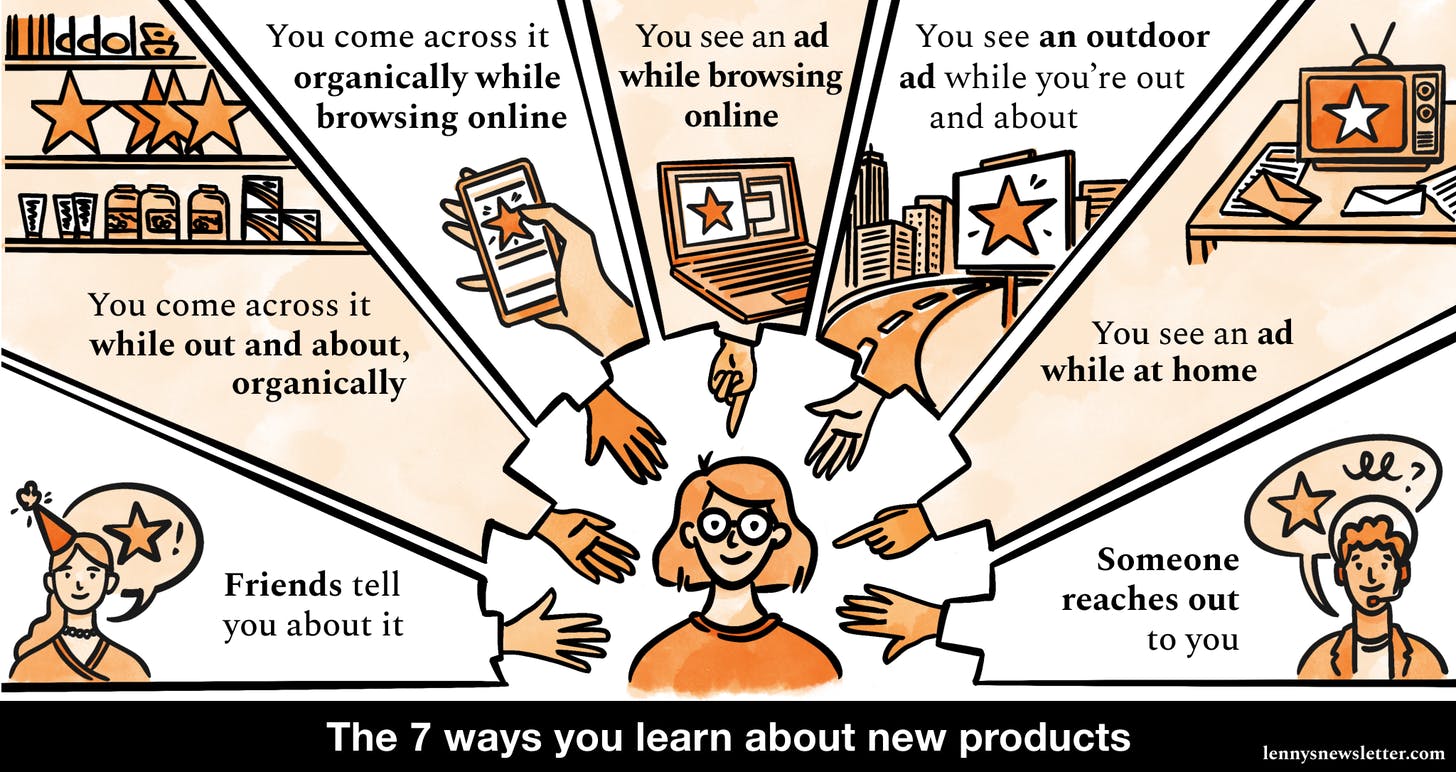
1. Friends or colleagues tell you about it
The oldest growth channel in the book—friends or colleagues telling you about something they’ve discovered and love. This can happen at a party, at your home, at the office, over email, etc. Generally, this is free and very organic (e.g., “I LOVE my new spatula, check it out!”), but it can also be incentivized through a referral program or even an MLM program. This is by far the cheapest and best way to grow if you can pull it off.
In another article, I covered this topic in-depth, including a look which products grew primarily through this channel:
In another article, I covered this topic in-depth, including a look which products grew primarily through this channel:
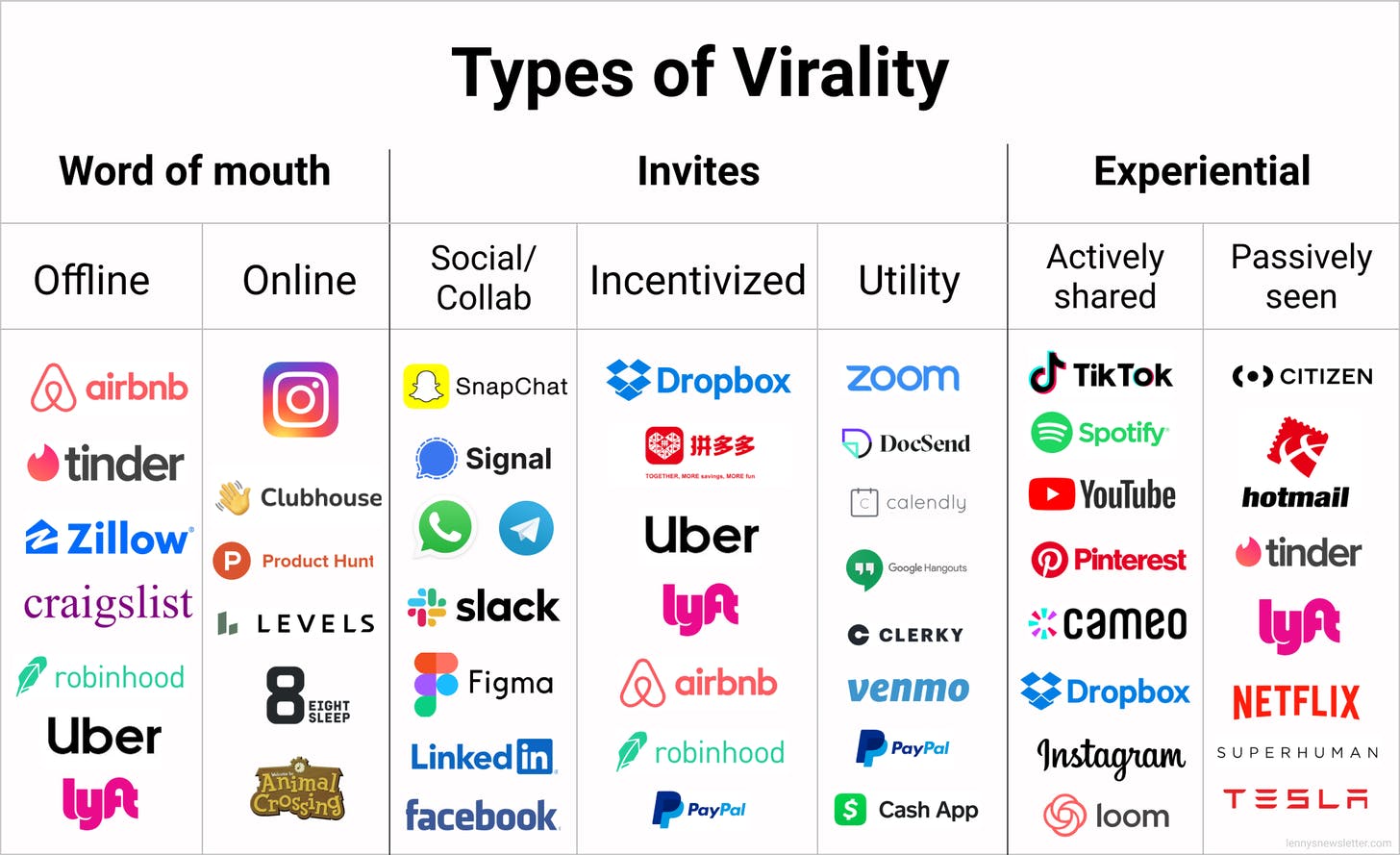
You should invest in this channel if:
- Your product is innately better with friends or colleagues (e.g., Snapchat, Slack)
- Your product is innately fun to share (e.g., travel photos, homes for sale, crime nearby)
- Your product is remarkable—something worth remarking about.
Most products do not grow this way (and it’s nearly impossible to layer on if the product isn’t naturally suited for this), so don’t be sad if you can’t make this work.
2. You come across it organically while browsing online
The next best (a.k.a. cheapest) way to learn of new products is to see people on the internet (organically) talking about them.
This includes seeing social media posts, press, influencers organically sharing something, comments in a forum, Wirecutter articles, and organic search results, etc.
Products that grew primarily through this channel include Clubhouse (people on Twitter talking about it), e.l.f. Cosmetics (TikTok influencers raving about it), Zillow (press articles), Animal Crossing (people on Facebook posting about it).
For example, here’s a case study of how e.l.f. used TikTok to get a ton of attention:
Products that grew primarily through this channel include Clubhouse (people on Twitter talking about it), e.l.f. Cosmetics (TikTok influencers raving about it), Zillow (press articles), Animal Crossing (people on Facebook posting about it).
For example, here’s a case study of how e.l.f. used TikTok to get a ton of attention:
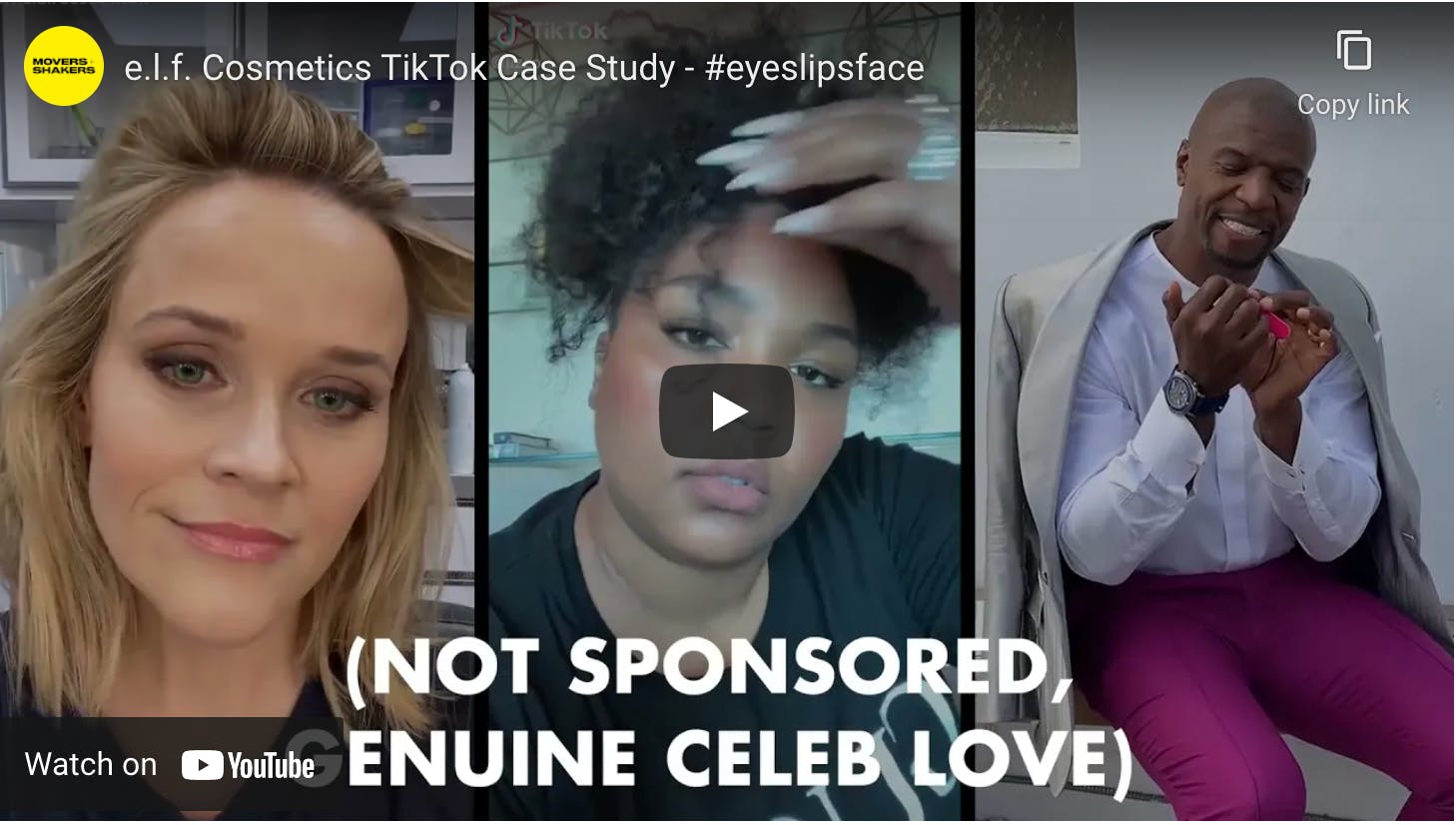
Similar to the first bucket, it’s worth betting on organic traffic if:
- Your product is remarkable—people are naturally excited to talk about and share it (e.g. Instapot)
- People are already looking for your product—Googling “best CRM” or “best credit card”
- Your product or company makes for a good story—one that reporters would want to cover, for example
3. You come across a promotion while browsing online
Companies like Wish, Casper, Calm, Blue Apron, and Hims grew primarily through this channel—ads (e.g., Facebook, Google, Twitter, YouTube), paid influencers, affiliate programs, and channel partners. Some examples:
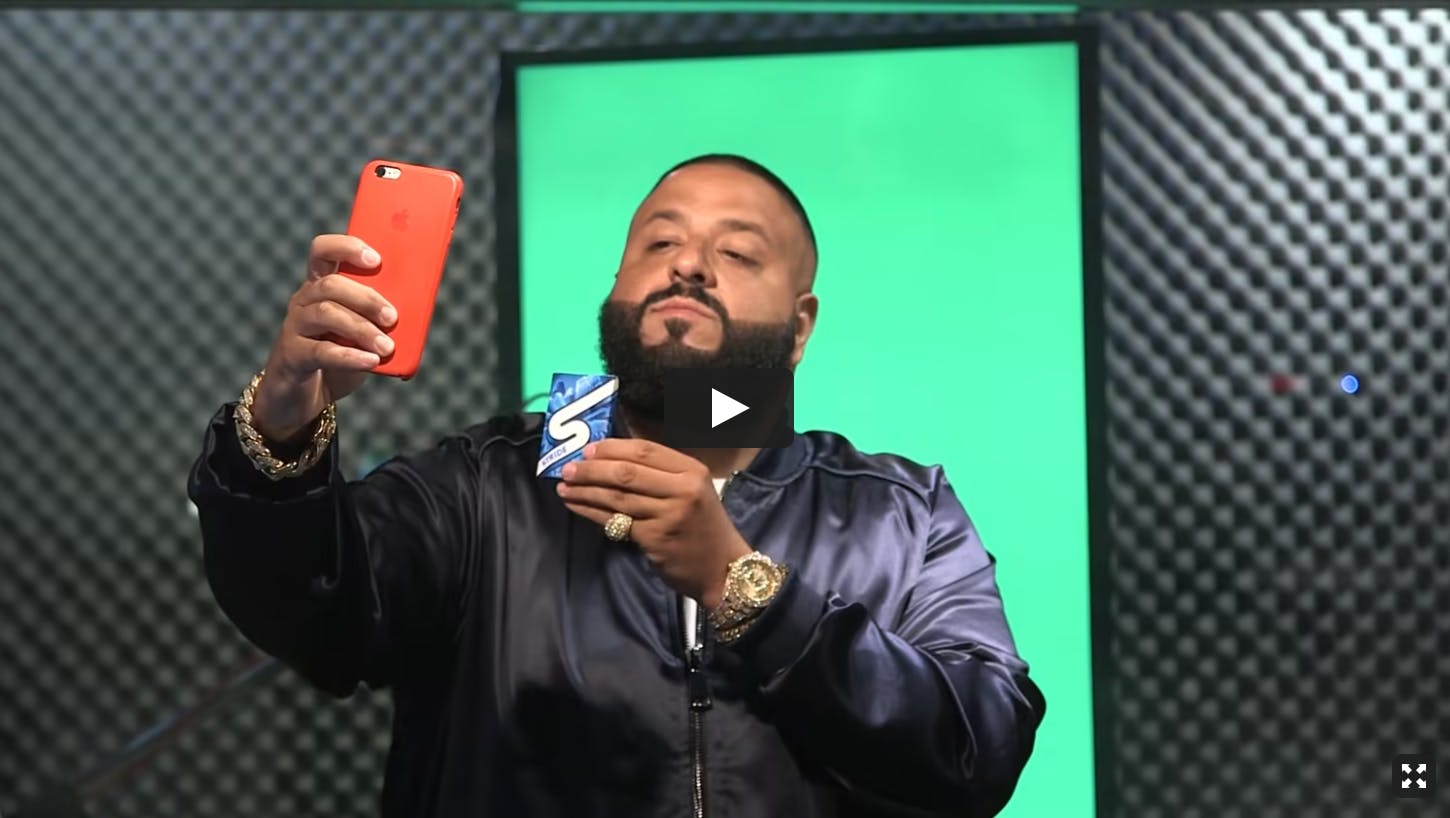
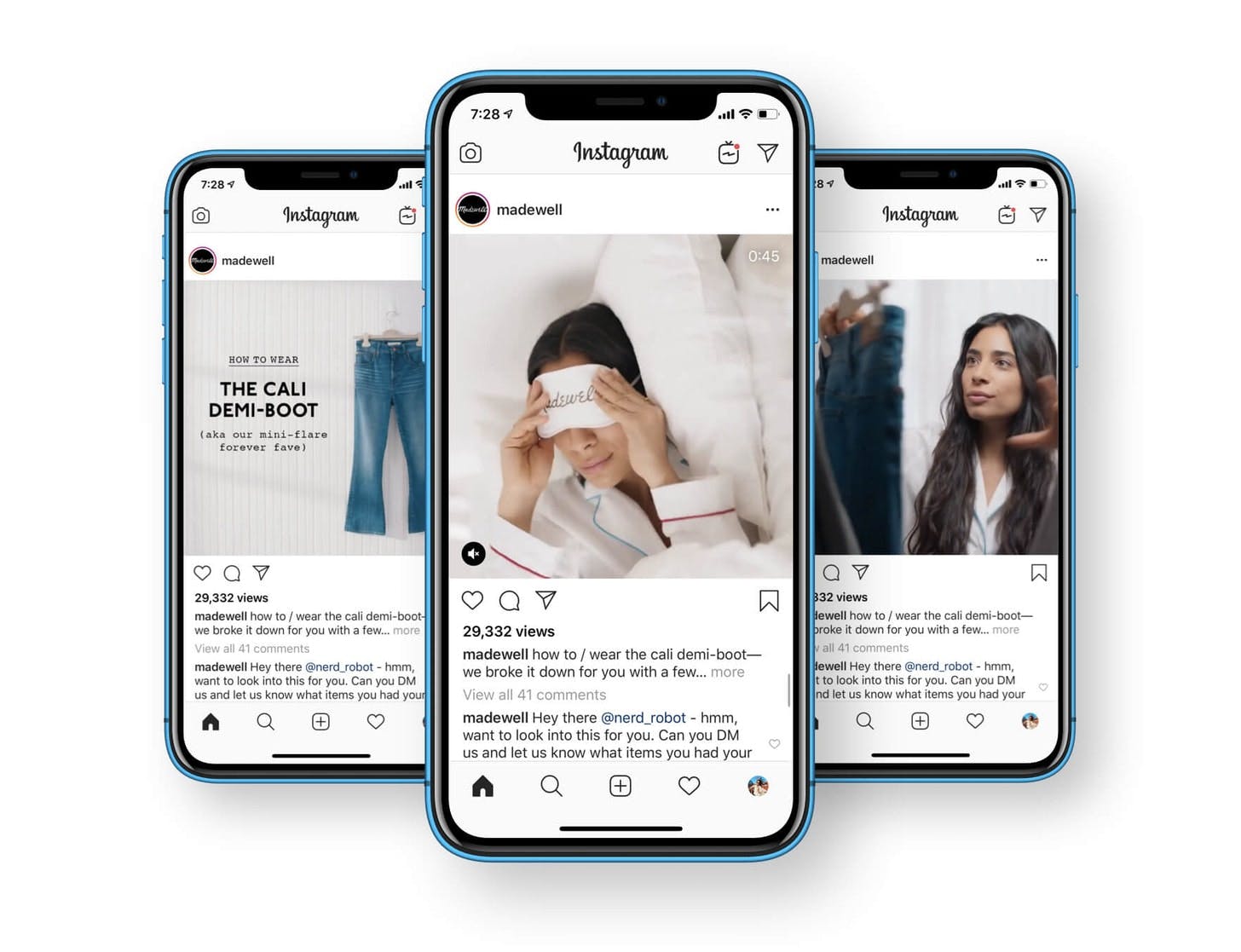
Source: Tailwind
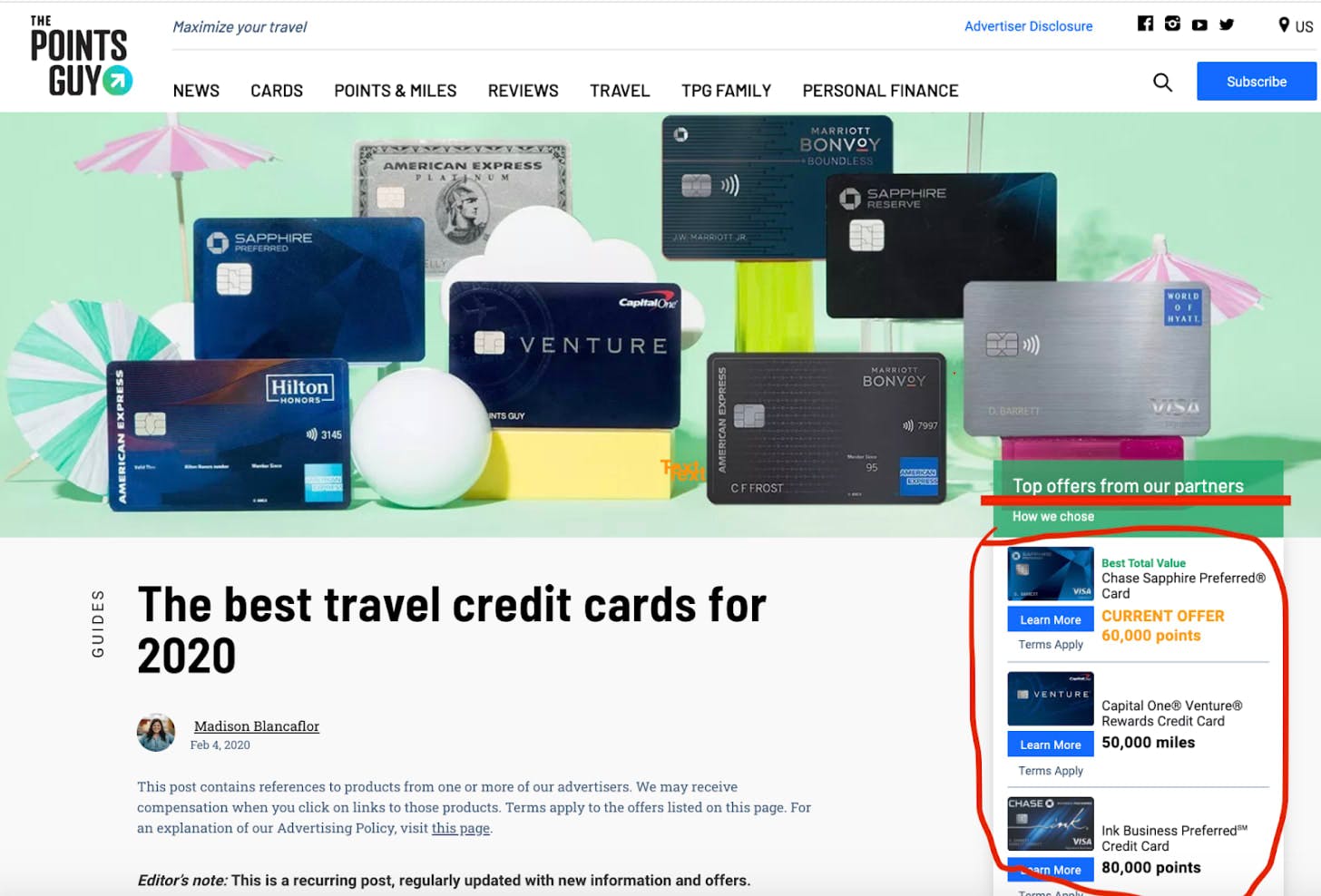
Source: HostGator
As I covered in a previous article, this channel is most effective if:
- Customers aren’t naturally looking for your product (e.g. Impact Gum), and thus you have to come to them
- You generate revenue directly from new users (e.g. purchasing a product, subscribing to a service), which you can then use to fund more ads (e.g. for jeans)
4. You come across it organically while you’re out and about
Many new products are discovered by people simply happening upon them while being out and about in the world—noticing a new cereal on the shelf, seeing a Tesla drive by, peeping a Peloton sitting in a friend’s home.

Source: unsplash.com/@franki
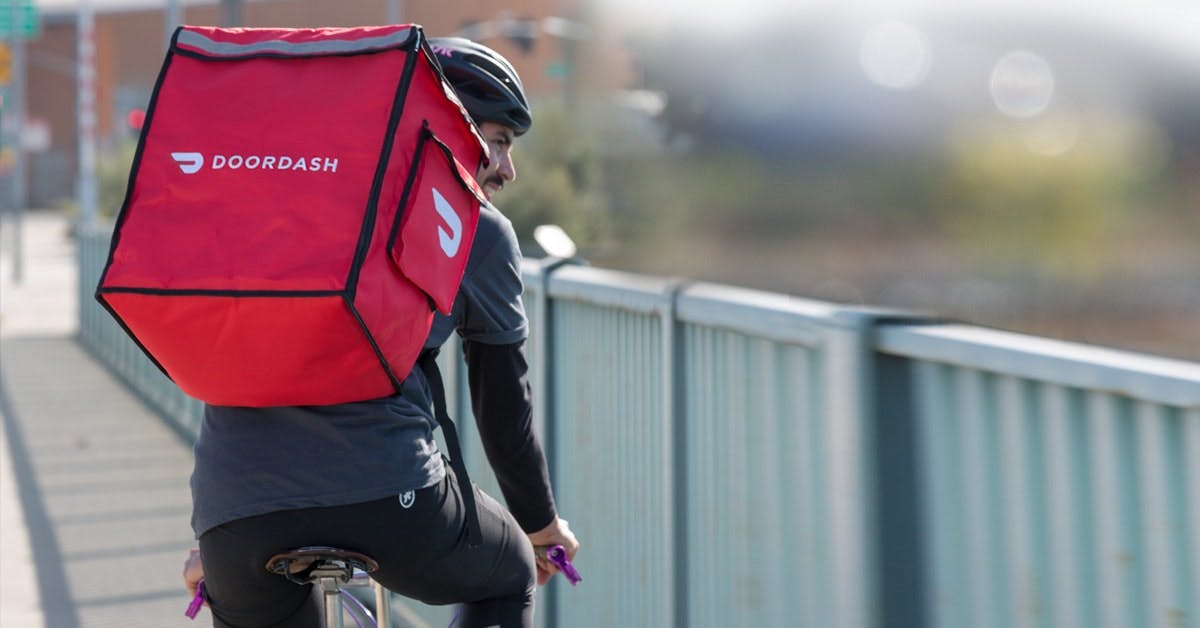
Source: DoorDash
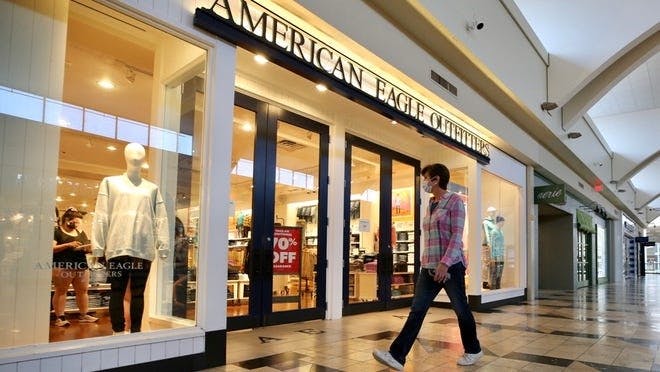
Source: cincinnati.com
Most CPG products grow through this channel (i.e. shelf placement), as do retailers (i.e. foot traffic), and some consumer electronics (e.g. those white iPod headphone people used to wear). This is an effective growth channel for physical products that:
- Look great
- Are prevalent
- Are impulse purchases
5. You come across a promotion while you’re out and about
This is the classic “out-of-home” (OOH) marketing channel: billboards, bus ads, taxi ads, backs of trucks, flyers, etc. You pay to get your advertisement in front of people who spend time around a certain location in the world.
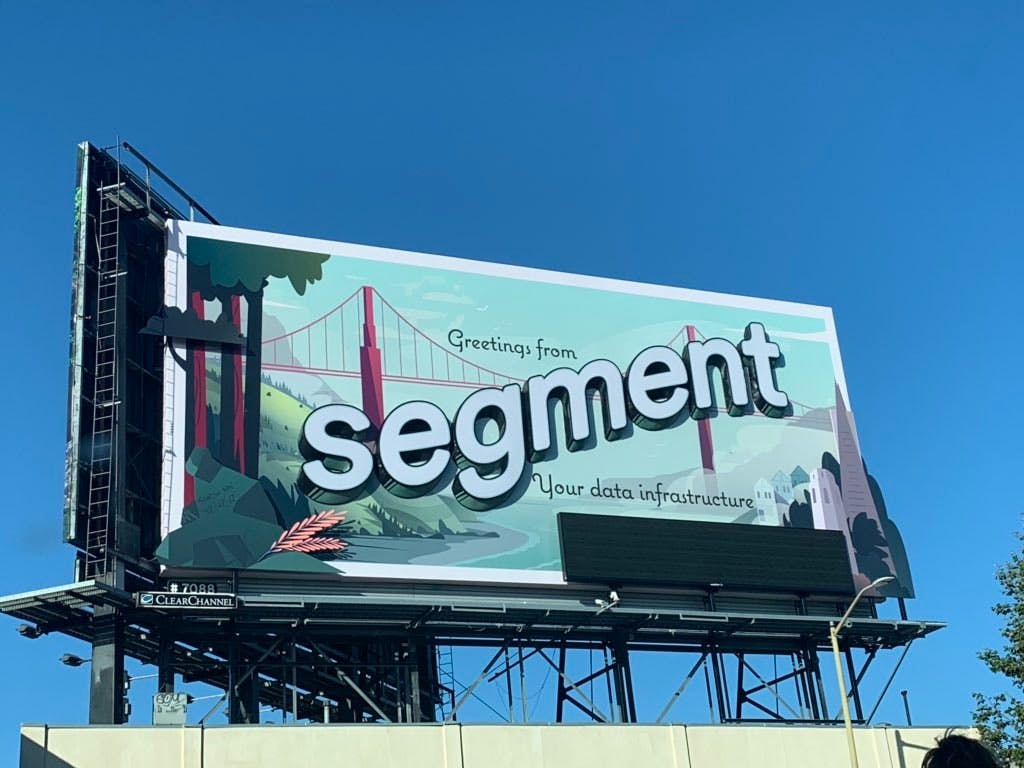
Source: @mahersinjary
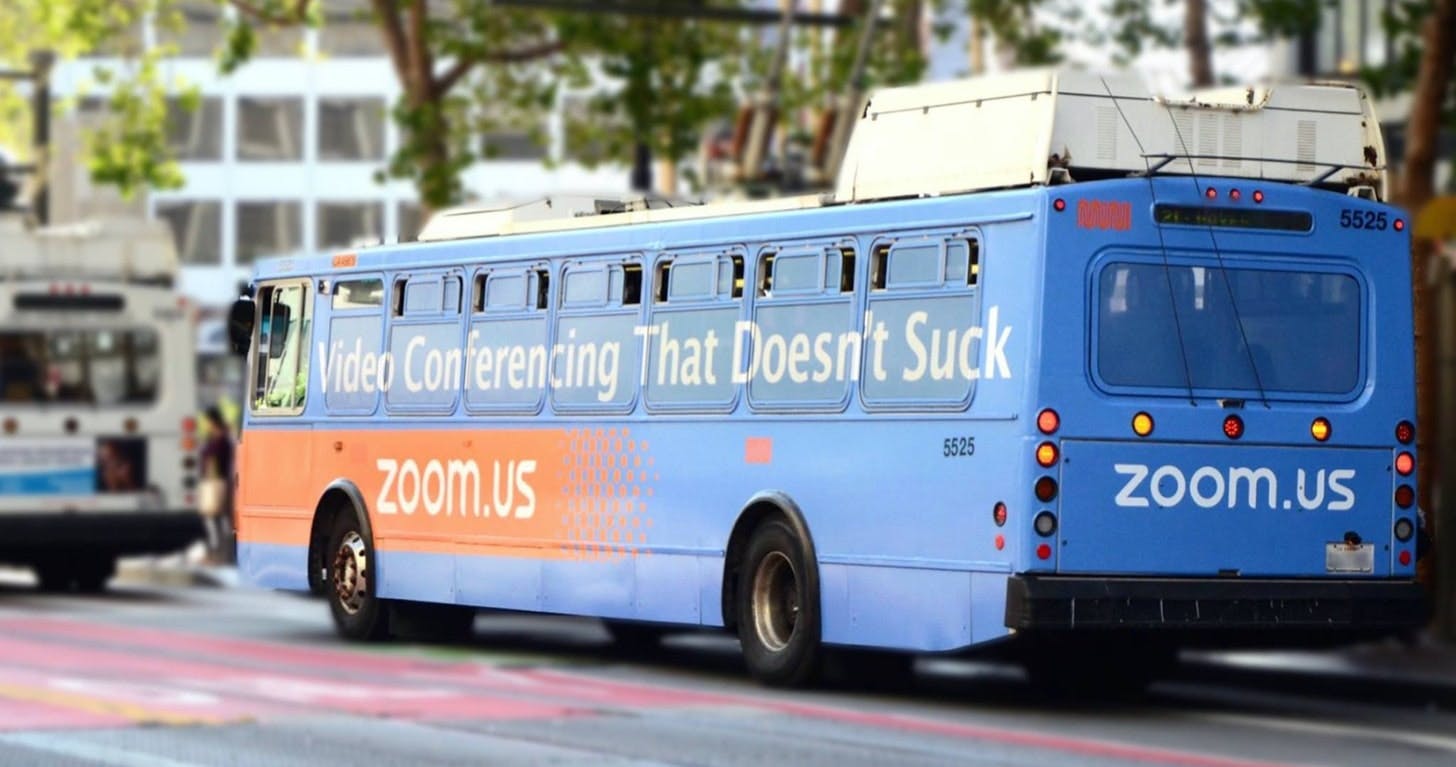
Source: Zoom
This is traditionally a hard channel to measure a return on investment in, but can build a massive brand moat if done well (e.g. Nike, Apple, and Coke). It’s also a powerful tactic to get the attention of a certain audience in a specific location, such as Brex, heavily leveraging billboards and bus stops in SF to get the attention of founders:

This channel is best suited to:
- Companies that need to build strong brands
- Products that sell to a broad mainstream audience
- Companies looking to make a splash
6. You come across a promotion while at home
When you think of in-home advertising, you probably think of TV ads, but there’s so much more: direct mail, ads on the packaging itself, flyers inside packaging, radio ads, podcast ads, newspaper and magazine ads. A few examples:
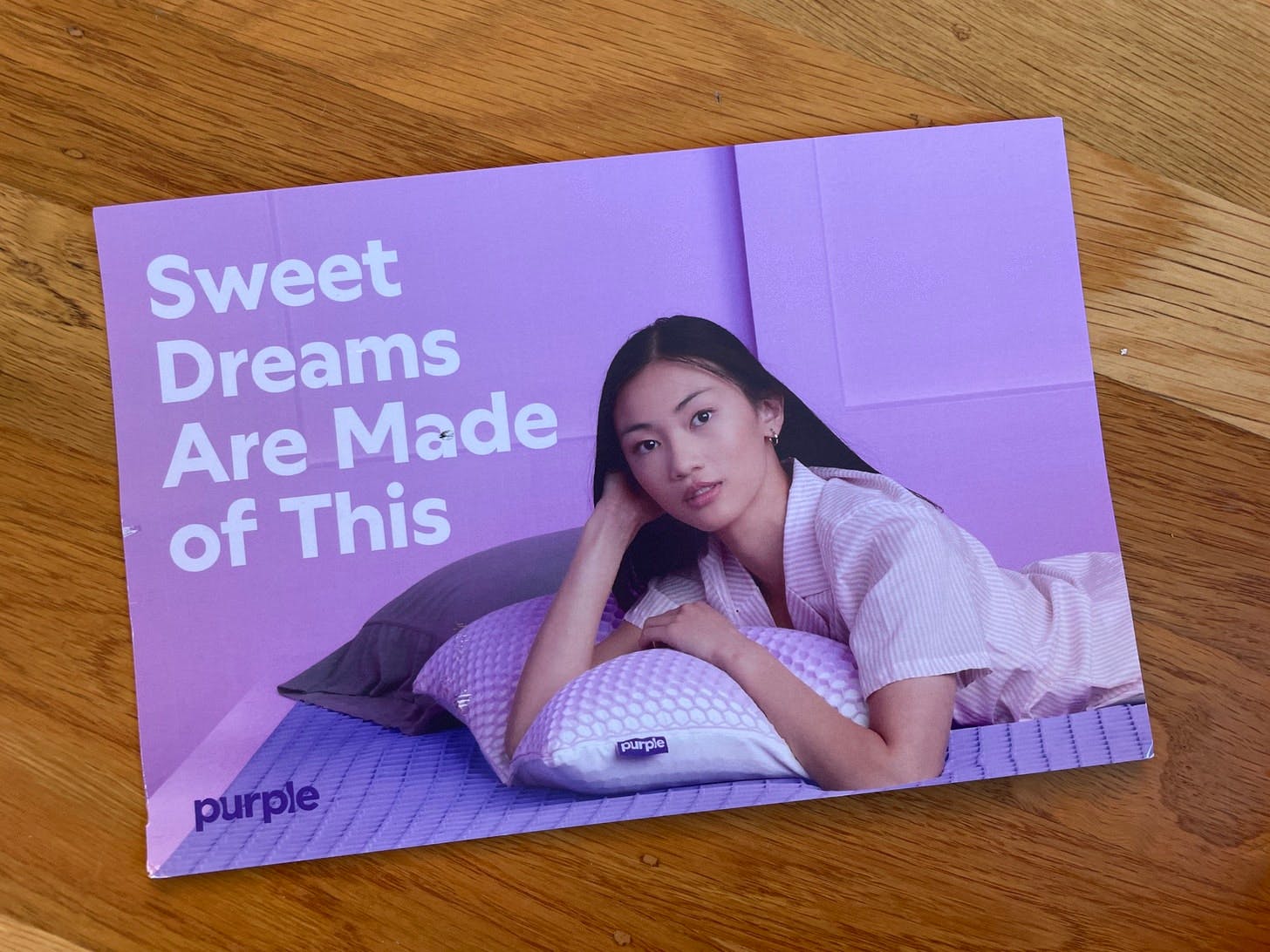
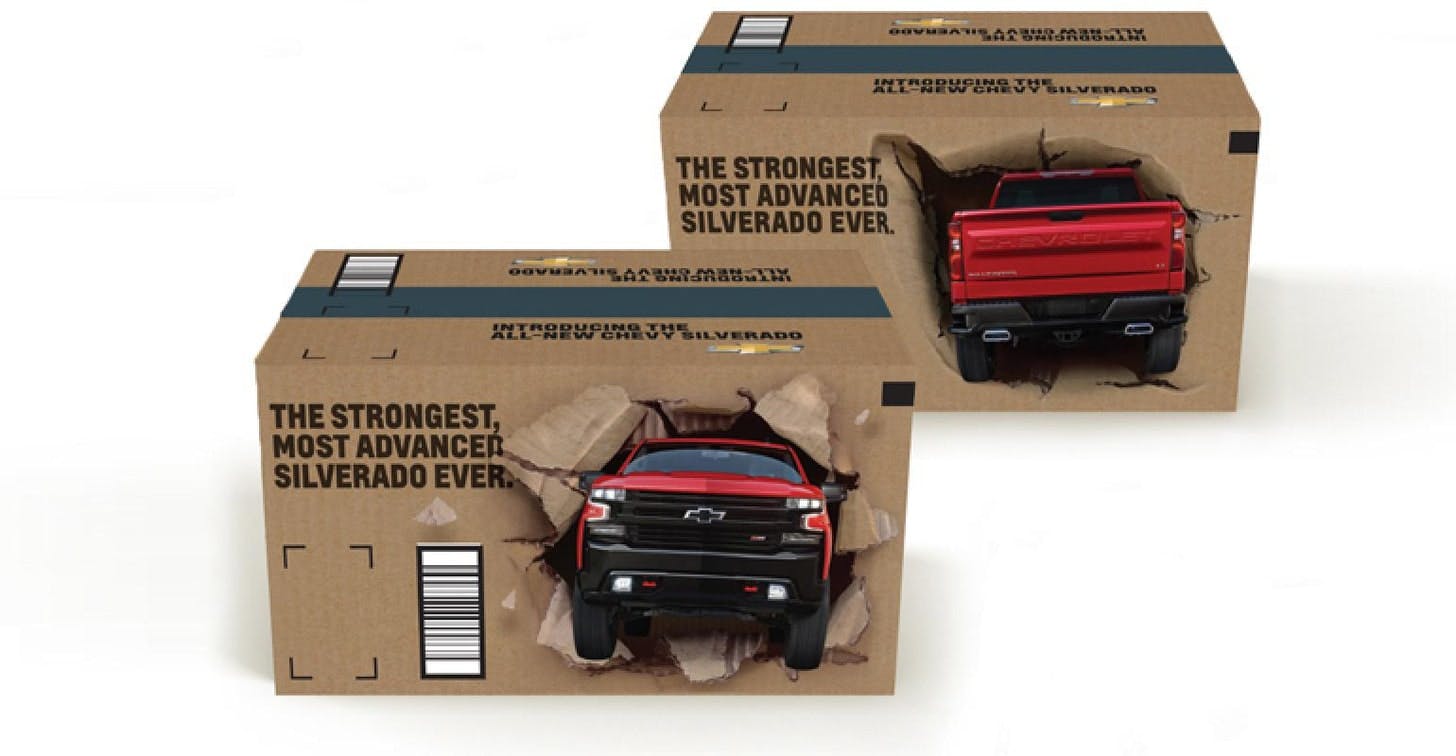
Source: WardsAudo

Direct mail particularly has become a staple of DTC product growth strategies, and podcast and newsletter ads have been an increasingly popular way to get in front of new customers.
This channel is best suited to:
This channel is best suited to:
- Companies that sell a subscription, or high average order value (AOV), products that can sustain the cost of this type of advertising
- Companies that can get a lot of value out of targeting geos
- Companies that can get creative with how they use the platforms (e.g. Geico)
- DTC brands
7. Someone reaches out to you to tell you about it
Finally, there’s outbound sales—someone coming to you to tell you about their product. This can be over the phone, email, DM, LinkedIn message, or door-to-door.
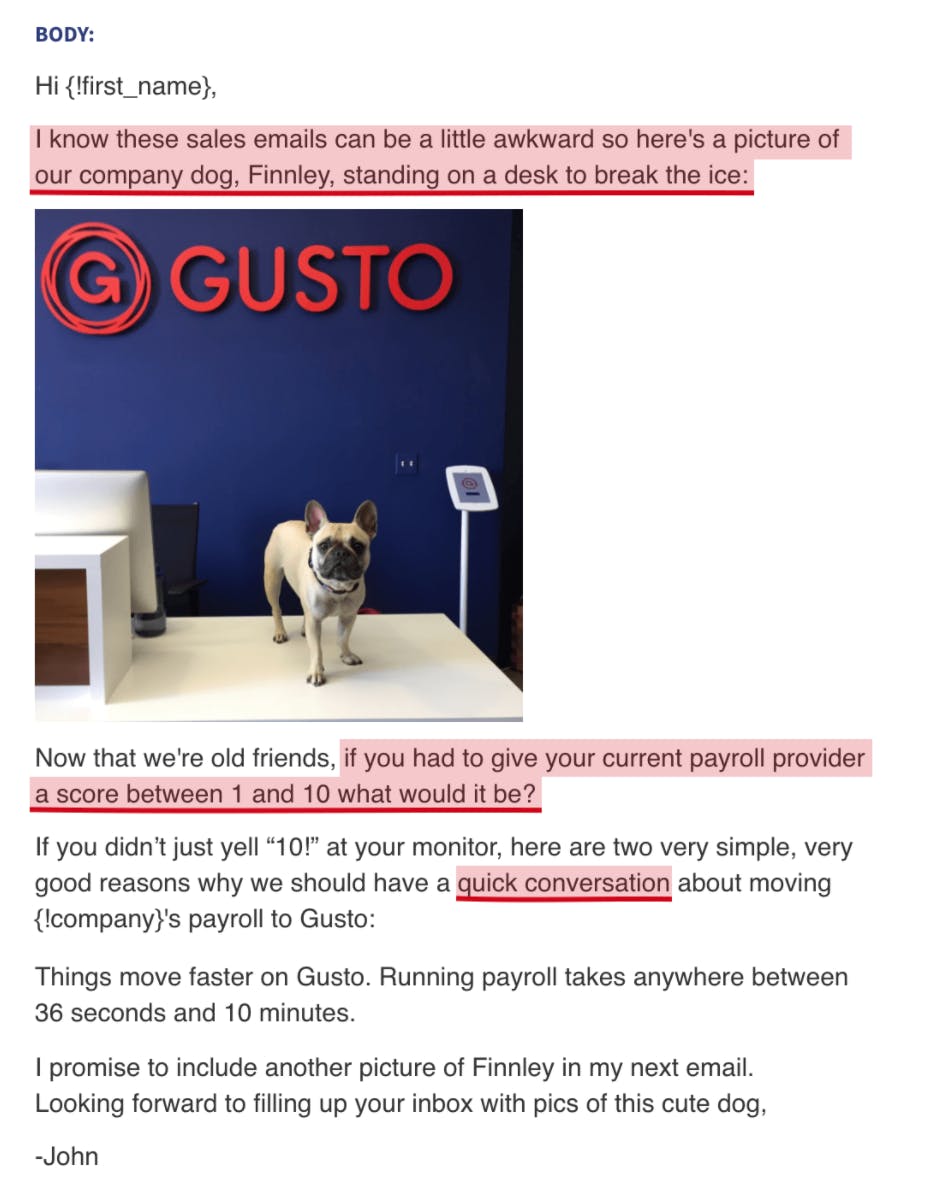
Source: marketingexamples.com
Large enterprise companies grow primarily through this channel (e.g., Oracle, Workday, and ADP each have outbound sales teams reaching out to people daily), as well as all the telemarketing and door-to-door-driven businesses like Cutco and a lot of insurance companies. If you’re a founder, I can’t recommend this book on doing sales highly enough.
This channel is best suited to products:
This channel is best suited to products:
- That have high AOVs and high LTV (to support the cost of a sales team)
- That require hand-holding to be successful
- That are just getting started and looking for their initial customers
- That began through bottom-up-driven sales motion and are ready to layer on sales
Where to go next
OK, so there are seven broad channels to get people’s attention. Where should you invest? In addition to the tips I’ve included throughout, I suggest working your way through these five steps:
- Step 1: Who are your early adopters? e.g. middle-aged men in the Midwest, new dog owners in cities, HR leaders at growth-stage companies, etc.
- Step 2: Where do they spend time? e.g. a certain community, a certain newsletter, certain events, a certain physical location, etc.
- Step 3: What’s the quickest way you can get in front of this group? e.g. send them a mailer, DM on LinkedIn, put up a billboard, run FB ads
- Step 4: What’s the cheapest way you can get in front of this group? e.g. shelf placement, encouraging existing users to send invites, micro-influencers, etc.
- Step 5: How can you stand out when you communicate with this group? What’s remarkable about your product, your story, or your vision? What’s the big problem you’re solving for these people? What’s most surprising about what you offer?
This answer went much further than you likely imagined, but I hope this gives you enough food for thought for developing your GTM strategy. If you have any other suggestions or questions, don’t hesitate to reach out.
–
This article originally appeared in Lenny's Newsletter, a weekly advice column about product, growth, working with humans, and anything else that's stressing you out at the office.
Comments (4)
James Paez@james_paez
The information for the people who are dealing with online business and having websites of different products are pretty useful. I’m sure after the updated article about product hunting various people able to explore on www.techtimes.com/articles/27339... and learn something new. Your efforts are real and much appreciated keep going.
Share
Thanks Lenny. Nice to get the big picture for product placement, as well as the pic of the dog and shout out to my fav Bo Burnham!!
The journey of discovering new products is an exciting adventure. Whether it's through recommendations from friends, online reviews, or exploring in-store, the process is about finding items that resonate with our needs and preferences. In this age of conscious consumerism, the option of Searching for cosmetic by composition has become a game-changer. It empowers us to delve deeper, ensuring that the products we choose are aligned with our values and skin requirements.
College brawl APK has captured the enthusiasm of dedicated gamers, particularly college students, immersing them in exciting virtual worlds accessible on their Android devices. This multiplayer brawler promises an engaging experience in which players assume roles within a renowned university, embarking on thrilling adventures and encountering surprises at every turn.
More stories

Mathew Hardy · How To · 3 min read
How to Detect AI Content with Keystroke Tracking

Sanjana Friedman · Opinions · 9 min read
The Case for Supabase

Vaibhav Gupta · Opinions · 10 min read
3.5 Years, 12 Hard Pivots, Still Not Dead
Kyle Corbitt · How To · 5 min read
A Founder’s Guide to AI Fine-Tuning

Chris Bakke · How To · 6 min read
A Better Way to Get Your First 10 B2B Customers
